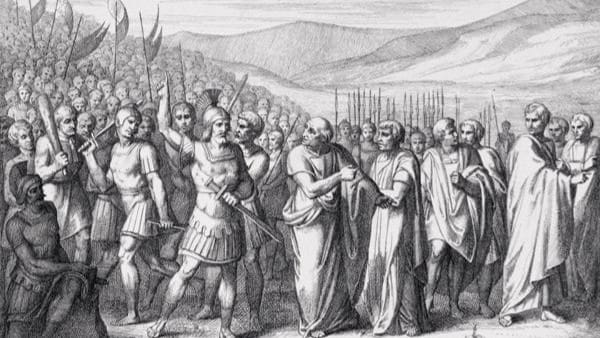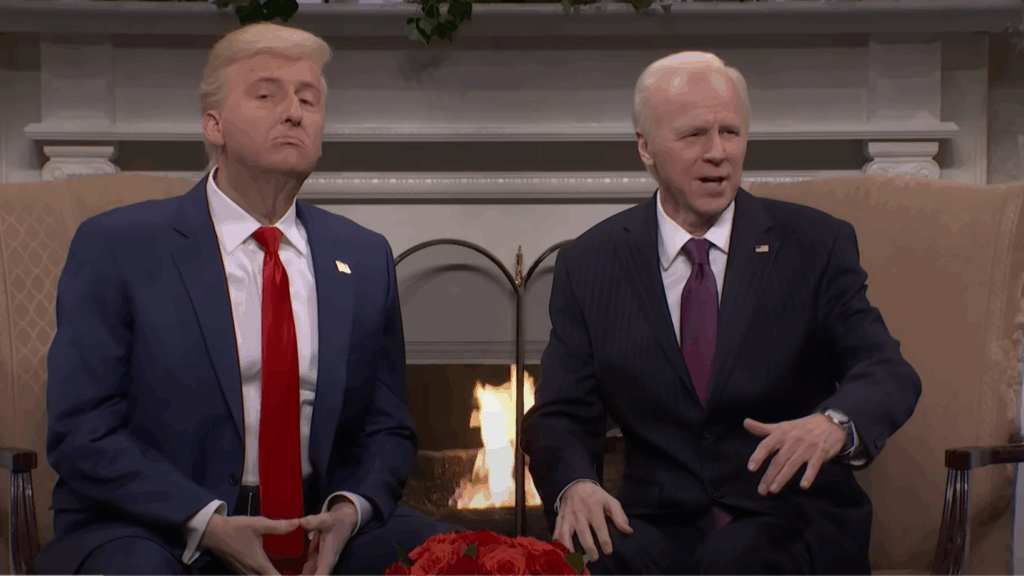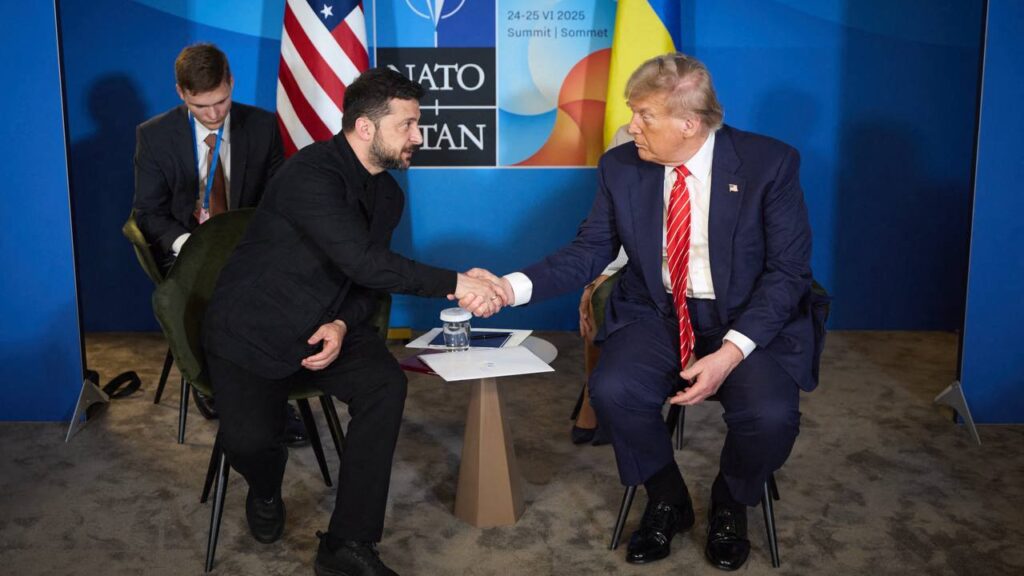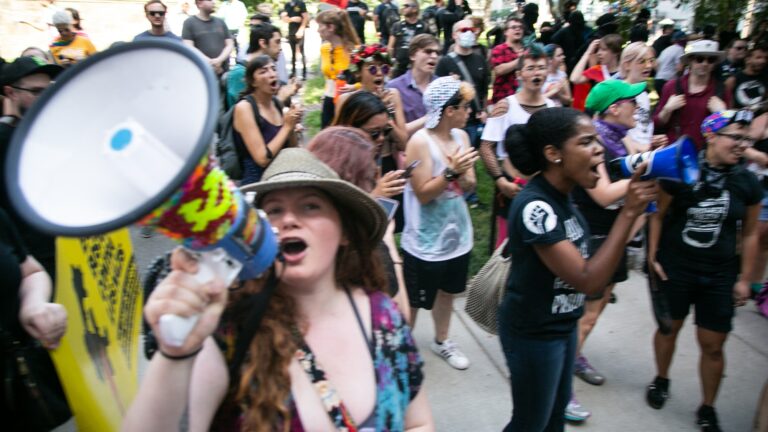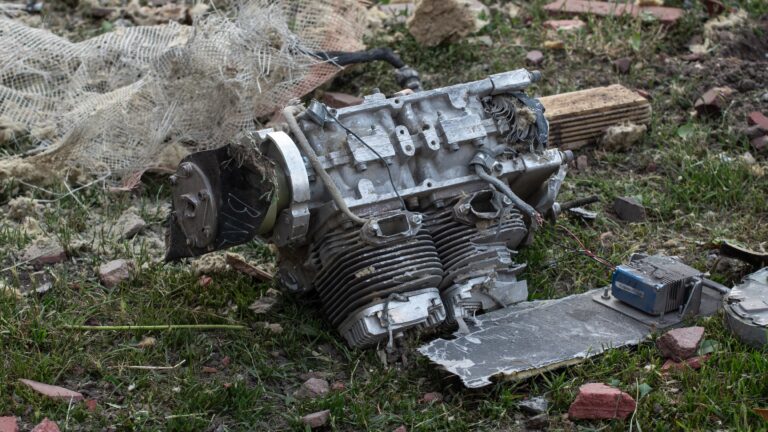A large segment of America’s political elite is having panic attacks about the upcoming presidential election; the prospect of Donald Trump returning to the White House is treated like the end of days. One wishes this were an exaggeration. To quote an unnamed Democratic Party operative who works closely with the Biden administration, ‘This isn’t, “Oh my God, Mitt Romney might become president. ” It’s “Oh my God, the democracy might end.”’
Such palpable fear isn’t new: in mid-2016, political commentator Andrew Sullivan wrote a hyperventilating, 7,500+ word essay titled ‘America Has Never Been So Ripe for Tyranny,’ where he declared that ‘In terms of our liberal democracy and constitutional order, Trump is an extinction-level event.’
These sorts of articles—narrowly focused on Trump as a populist demagogue who nominally seeks to overturn the democratic order of the day—consistently share a common trait: a failure to fully grapple with the question of why a figure like Trump emerges in turbulent democratic politics. This is because the answer makes for very uncomfortable digestion:
democracy, like all other regimes, is temporary.
Irving Kristol, ‘perhaps the most consequential public intellectual of the latter half of the century‘ and the founder of The National Interest (of which I was once the editor), summarized this view:
[A]ll forms of government — democracy, oligarchy, aristocracy, monarchy, tyranny — are inherently unstable, all political regimes are inherently transitional, [and] the stability of all regimes is corrupted by the corrosive power of time. It is no accident. . .that the twentieth century has witnessed a whole series of rebellions against secular-liberal-capitalist democracy. These rebellions have failed, but the sources that feed such rebellions remain. Which is to say that our American democracy, though seemingly triumphant, is at risk, and it is at risk precisely because it is the kind of democracy it is, with all the problematics . . . that fester within such a democracy. Among such problematics are the longing for community, for spirituality, a growing distrust of technology, the confusion of liberty with license, and many others besides.
This is a provocative assertion, but it deserves consideration. Let us assume it is true; if so, then what exactly are the specific changes that, over time, erode a democratic regime?
There are two answers to this, and they both interact with the other: changes to social institutions and changes in technology.
Let us start with the former. Any society, especially a democratic one, requires not just an assortment of structures and government institutions, but also—to quote scholar Robert Merry— ‘a general consensus on what the society stands for, whence it came, its underlying cultural essence, its heritage.’ This shared cultural understanding is the metaphorical glue that binds people together, even if they inhabit different geographical locations, have differing views, or the like. If this shared cultural understanding is gradually undermined, then eventually a society will face a dramatic crisis.
The most obvious historical example of this is the Roman Republic. The citizens of Rome followed what is known as the mos maiorum, or ‘way of the ancestors.’ This was a foundational concept in Roman culture and society, emphasizing traditional values and social norms inherited from previous generations. It encompassed virtues such as pietas (duty and loyalty to family and the gods), gravitas (seriousness and dignity), and virtus (courage and excellence). These values guided individual behavior and public life, reinforcing a sense of continuity and stability within the Republic. Moreover, the mos maiorum dictated respect for hierarchical structures, adherence to customs, and the importance of collective welfare over individual interests. This adherence to ancestral traditions, this unwritten constitution, was crucial to maintaining the social order and integrity of the Roman state.
Thus, the gradual departure from the mos maiorum contributed significantly to the downfall of the Roman Republic. As Rome expanded and became more diverse, the influx of new cultural influences, along with wealth and slaves began to challenge the established order. The rise of powerful individuals who prioritized personal ambition over communal well-being exemplified this shift. Leaders like Sulla, Pompey, and Julius Caesar increasingly relied on their personal armies and bypassed traditional republican institutions to achieve their aims, undermining the authority of the Senate and the rule of law. The erosion of the mos maiorum was also evident in the decline of respect for established norms, such as term limits for public offices and the sanctity of the tribunate. As Robert Merry summarizes,
The bonds of civility had been broken, and a civic stridency set in. People still talked glowingly about mos maiorum. They still considered their governmental system the greatest in a world dominated by kings and dictators. They still clung to the notion that nothing had really changed. But everything had changed. The constitution had been breached, and it no longer could hold the polity together as in the glory days of old. Outcomes became more important than constitutional processes.
It is impossible to miss how similar this sounds to current-day U.S. political discourse.
Political elites are fixated on the notion that the West is engaged in an ideological battle of ‘democracy vs. autocracy’ (with the latter embodied by Russia and China), that the United States is still a hegemonic geopolitical force for good, and that the U.S. political system itself is still working within the original constitutional framework set down by America’s Founding Fathers.
Yet it is blatantly obvious, just as in Rome, that everything has changed. Traditional U.S. political norms have weakened. The voting franchise has been extended from European men with property to virtually anyone age 18 or older. U.S. senators are no longer selected by state assemblies and are instead popularly elected. Various traditional constitutional checks on federal power have been eroded. Outcomes now matter more than processes, as demonstrated by the vindictive prosecution and conviction of Donald Trump in New York state. To quote one commentator, the United States ‘can no longer plausibly claim to be a global example of the nonpartisan rule of law and constitutional government. That reputation was already damaged by Trump’s clumsy attempt to overturn the results of the 2020 election. Today, however, thanks to his enemies’ willingness to turn the courts into tools of election interference, that perception that the US is now the world’s largest banana republic has been cemented.’
Even less commented upon is how much the United States has undergone dramatic cultural change. Rampant immigration over the past 50 years has changed the demographic and cultural makeup of the country, diffusing its previous sense of broad cultural unity. It was Plato’s own student, Aristotle, who noted that an ethnically diverse society lacks philia, the flesh-and-blood fraternity of citizens, which is essential for domestic unity and thus the sovereignty of a democracy. Instead, ideological politics have taken center stage. Certain progressives in the New York Times even go as far as engaging in historical revisionism to dispute the country’s founding purpose and identity over the matter of race and slavery. The title of a prominent political scientist’s latest book, Crisis of the Two Constitutions, captures the sense of division.
It is not hard to conclude that contemporary America has no ‘general consensus on what [it] stands for, whence it came, its underlying cultural essence, its heritage.’ It stands to reason then that the United States, in its current democratic form, cannot long survive such gaping internal division over what sort of country it is, who are its inhabitants, and what it stands for.
Yet social transformation alone cannot account for why political regimes change. It is also necessary to observe technology’s key role in this process.
Simply put, technological advancements alter economic structures, communication methods, and military capabilities. These shift the balance of power within a society, enabling new classes or groups to challenge existing authorities.
This dynamic can also be seen in the fall of the Roman Republic. The expansion of Rome’s territories brought about increased reliance on slave labor, facilitated by advancements in agricultural technology such as the Roman plow and watermills. This led to the concentration of wealth among a few elite landowners, causing widespread economic disparity and social unrest among the plebeians, who were often displaced from their small farms. The Gracchi brothers’ attempts at land reform highlighted the tensions between the wealthy elite and the common citizens, ultimately contributing to political instability. As economic inequalities grew, the traditional Republican structure, which relied on a degree of social cohesion and shared governance, became increasingly strained. Similarly, innovations in military technology—such as improved road systems, fortifications, and siege technologies—allowed Roman generals to project power more effectively across vast distances. These developments which empowered individual military leaders, when combined with the concentration of wealth amongst the elites, eroded traditional civic loyalty to the Republic in favor of powerful individual figures like Julius Caesar, who leveraged their wealth, military success, and personal armies to challenge the authority of the Senate.
It is not hard to see how recent technological innovations in the modern world, especially in the United States, parallel changes in the Roman Republic. The technological advancements in the late industrial and digital age, such as automation, digital communications, and the gig economy, have drastically altered the labor market. This, when combined with the influx of cheap labor via elite-encouraged mass migration—echoing the Roman elites’ preference for slave labor—has led to significant economic disparities, where
wealth is increasingly concentrated in the hands of a small economic and financial elite.
This concentration of wealth has exacerbated social and economic inequalities, leading to a sense of disenfranchisement among the broader population. Much like in ancient Rome, where the plebeians felt marginalized by the patrician class’s control over resources and the political process, modern American society sees growing unrest and calls for systemic reforms to address these imbalances.
There are, however, some less obvious but potentially even more disruptive, technology-driven developments also occurring. Consider for instance the decline in literacy rates. The emergence of democratic societies over the past 200 years arguably depended on the proliferation of mass literacy, which enabled citizens to understand hitherto complex political and economic issues, engage in political discourse, and ultimately demand representation and participation in the political process. The decline in literacy rates, driven by the increasing preference for audio-visual media and the consumption of information in short bursts—think of TV news and TikTok—undermines this foundation. As literacy wanes, so does the capacity for critical thinking and informed decision-making, essential components of a healthy democracy. This trend threatens to erode the informed electorate that democratic societies rely upon, potentially leading to a populace that is more easily swayed by simplistic, emotive messaging rather than nuanced, rational debate.
This trend is worsened by the advent of big data, big data analytics, and targeted advertising. When combined with political practices such as ‘ballot harvesting‘ and coordinated ‘get out the vote‘ efforts, political campaigns can now micro-target specific voter segments with tailored messages, creating reliable voting blocs and reducing the emphasis on broad-based political platforms that seek to unite diverse groups. This technological manipulation of voter behavior parallels the personal armies of Roman generals, where loyalty was engineered through direct, targeted incentives rather than a shared commitment to the Republic’s ideals.
Finally, the rise of social media and alternate media sources, enabled by the low starting costs of the Internet and digital technologies, has shattered the power of ‘gatekeeping’ media institutions, such as newspapers, magazines, and traditional TV news. These traditionally acted as barriers to radical politics by controlling the flow of information and promoting narratives and views that align more with the political center, suppressing dissenting ideologies and perspectives deemed ‘too extreme.’ Contemporary elites, notably shaken by this particular development, are reacting with panic, often labeling views—including legitimate ones—that diverge from the political center as dangerous or extremist. This approach not only undermines legitimate dissent but also alienates large segments of the population who feel their perspectives are being unjustly suppressed. Moreover, in responding to this development, political leaders are attempting to reinforce the key role of traditional gatekeeping institutions and apply heavy-handed measures to regulate online discourse. Citizens increasingly view these actions as desperate moves by an entrenched elite to maintain their authority rather than genuine attempts to protect democratic integrity. As such, trust in democratic norms is weakened even further.
Just how many statesmen, historians, and experts—even America’s Founding Fathers—attribute the downfall of the Roman Republic to ambitious individuals rather than social institutions or technological change, so too are contemporary political elites erroneously focusing on Donald Trump, believing that he, as an individual, is a unique and mortal threat to contemporary democratic society. This a prime example of ‘seeing the tree while missing the forest.’
In reality, the fate of American democracy—and democracy more broadly throughout the West—depends on social, cultural, demographic, and technological trends and changes that have been ongoing for quite some time now. It may perhaps be too late to reverse these trends, and the fixation on individual figures fails to address the real issues at hand. As history has shown, the unraveling of social cohesion, coupled with technological disruptions, erodes the very foundations of democratic systems. The question at hand now for far-seeing and responsible leaders is perhaps not whether democracy can be saved. Rather, it is what comes next and what can be done to best ensure the well-being of the common citizen?

